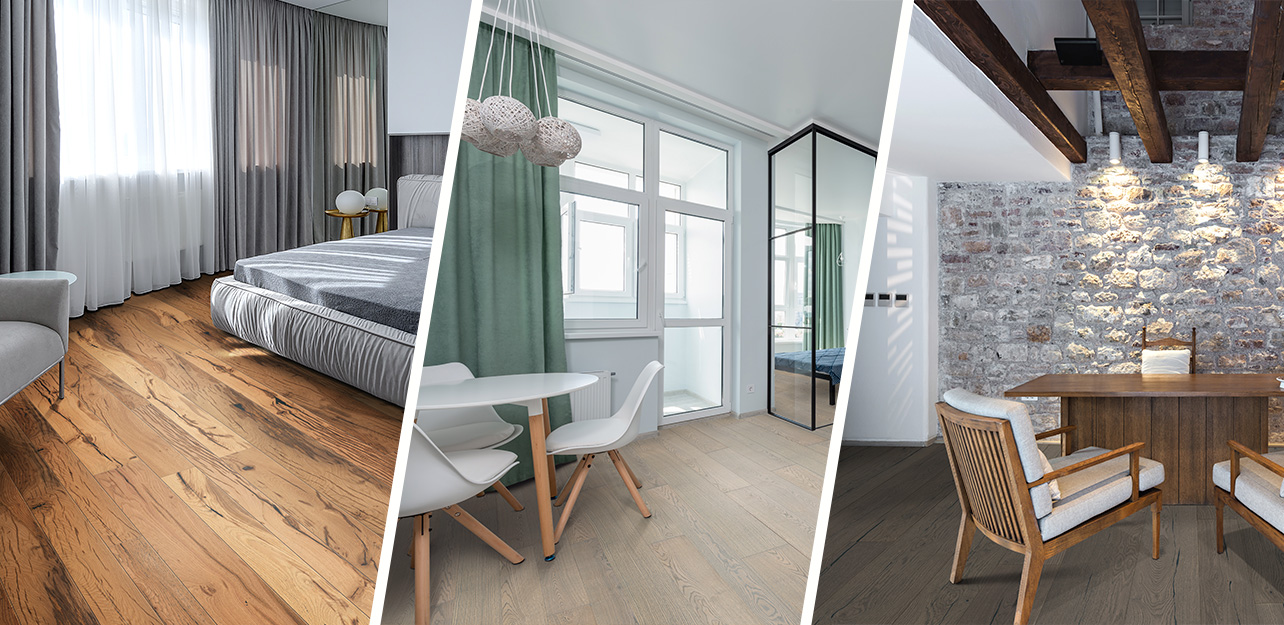
Types of Wooden Floors
OK, so you're faced with the decision to buy and you need to know which floor you need, or which one best suits your home. Well, we're going to help you understand the main differences between floors, because it's not just about aesthetics.
The choice is often between vinyl, laminate flooring, floating floorboard and parquet.
We will start giving a short definition of each one to clarify concepts, before discussing their advantages and disadvantages in more depth.
Vinyl flooring:
This is a floor covering characterised by its PVC core, sometimes combined with wood and referred to as WPC or with stone, SPC. The surface of vinyl flooring is covered with textile fabric or decorative paper that imitates wood or stone.
Laminate flooring:
Laminate flooring is manufactured from several layers of materials, derived from wood or synthetics that realistically mimic different types of finishes. It is usually mounted on a core of MDF or HDF board depending on the final requirements.
Floating floorboard:
Another floor covering, made from hardwoods. There is a wide range of formats and its main difference lies in the installation, as it is not placed directly to the floor.
Parquet:
Parquet is manufactured from hardwood or solid wood. It must be palced to the floor on a perfectly level base and is slashed and varnished on site. It must have a solid wood thickness of more than 2.5 mm.
Well, now that we have clarified what each concept is, it is time to make decisions and this is where we are going to talk about the key premises for your choice.
Appearance
In terms of appearance, the difference between a natural wood floor and a synthetic finish will be defining, as this is noticeable both to the eye and to the touch. On the other hand, natural wood floors provide us with unique and unrepeatable wooden planks, which will create a natural and harmonious atmosphere in any room.
Price
Another of the main factors that will drive our final purchase. Of course it depends on the budget we have, but we must take into account that cheap usually comes out expensive in the end and although synthetic flooring is much cheaper at the beginning, natural wood floors are much more durable and will be more economical in the long run.
Installation
Laminate flooring would be the easiest material to install. The floor has to be well cleaned and above all leveled. It can be installed over wood as well as other materials and in practically any space, as it will only add 8mm of height to the floor, without interfering for example with the movement of doors. The installation of parquet, as we have explained before, is the most complicated, as it requires a relatively complex work for its correct installation.
Maintenance
Both parquet and floating floorboards, being made of natural wood, have the disadvantage of being softer than laminate flooring, so they are more prone to knocks, damp and scratches. They are materials that require more maintenance with specific products and even slashing sometimes.
Laminate flooring, on the other hand, is much easier to maintain. To clean it, all you need to do is to wipe it with a mop dampened with any soapy solution.
Therefore, if you want an aesthetically more beautiful floor and the economic aspect is not a problem, go for parquet or laminate flooring. If, on the other hand, the economic aspect is important to you, you do not want something very expensive and you want a floor that is easy to maintain and does not cause too many problems, choose laminate flooring.
Share in Pinterest